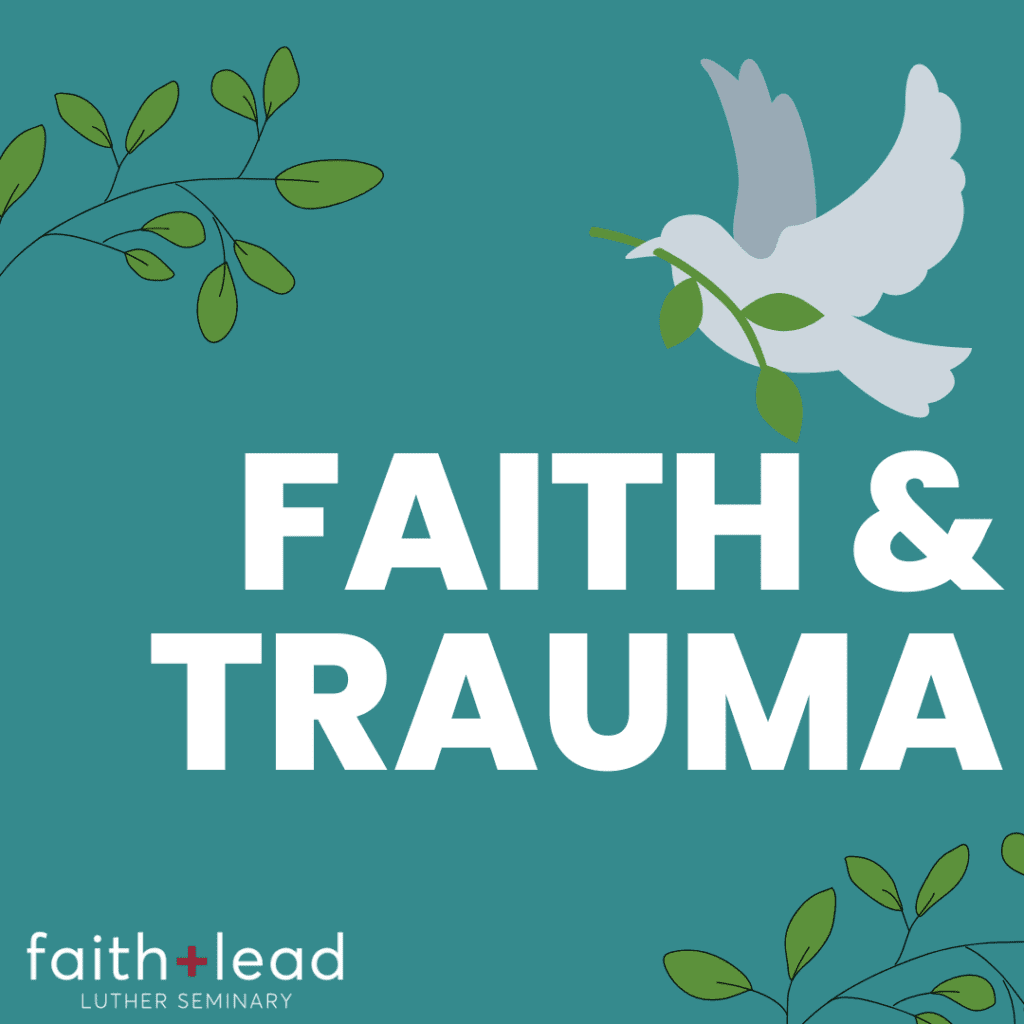Trauma is an interesting word. Depending on your context, it is a concept understood and dealt with on a daily basis. Or it is something shied away from, assigned to others, and most definitely NOT discussed. But the thing about trauma is we all have experiences of it. Trauma lives in our very bodies and can be passed on through the generations, (read Resmaa Menakem’s In My Grandmother’s Hands: Racialized Trauma and the Pathway to Mending our Hearts and Bodies). Trauma is more than simply an emotional response; it can be any negative experience which causes ongoing impact. As people of faith, we have a responsibility to face the hard things, hold the tension between what is and what could be, and seek healing.
Everyone in our world has experienced trauma in the last few years as we have endured this pandemic together. And while the pandemic did not create racial disparities, it most certainly highlighted them. Civil unrest and the voices of Generation Z proclaim a call to justice. It rings loud in our ears, if we’re listening.
I must admit my sin here. I have been in pastoral leadership for ten years and only started understanding my white supremacy when the pandemic hit. I have served historically white congregations and existed in predominantly white spaces. I leaned on the understanding, “in order to have meaningful conversations of privilege or supremacy it has to be in a multicultural space.” Or even the assumption: “we don’t experience racism in our church.”
But here is what I have humbly come to see: the reality of racism is sewn into the fabric of our country. And most profoundly: cultural competency and cultural humility has to start wherever a person is at. It is just as vital to have conversations in white spaces as it is in multiracial ones, (perhaps more so because the lack of diverse perspectives will not change without intentionality.) My lack of personal experiences does not negate the lived experiences of others. My unawareness and failure to act produces unconscious participation in our broken system. Whether intentional or not, my inaction was complacency.
What I share here is not new or profound. I am by no means an expert, but I am a person on an intentional journey. A journey towards understanding my own white supremacy, (and I write supremacy instead of privilege because it’s closer to the truth). The journey includes being uncomfortable, disarming my reflex to defend myself as “not racist”, and being okay with unresolved conversations. A journey towards cultural humility, (check out “What is Cultural Humility?” by PsychHub on YouTube).
So where did I start?
Whatever the setting, there is work to be done and there is always a place to begin. I started by asking the question: who are the voices I am listening to? I’m not talking about how many friends of color are in your circle, but reflecting on those who speak into your life from places of authority. Who impacts your thinking: your teachers, mentors, bosses, public officials, doctors, lawyers, pastors, etc? When the pandemic hit, I was doing a lot of justice work in my church and community, but as I heard the cries of injustice for George Floyd, I heard the echo of cries for Trayvon Martin, Eric Gardner, Sandra Bland, Philando Castile, Breonna Taylor, Ahmaud Arbery and realized I needed a shift in perspective. I looked for ways to expand those who influenced my thought process and point of view. We live in a digital age with a plethora of information at our fingertips. Once I started looking I found books, documentaries, articles, podcasts and more curated by people of color.
My book list:
(Shop from a Black-owned bookstore if you can, like Semicolon Bookstore on bookshop.org)
- I’m Still Here: Black Dignity in a World Made for Whiteness by Austin Channing Brown
- The Color of Compromise: The Truth About the American Church’s Complicity in Racism by Jemar Tisby
- Just Mercy: A Story of Justice and Redemption by Bryan Stevenson
- Stamped from the Beginning: The Definitive History of Racist Ideas in America by Ibram X. Kendi
- Ain’t I a Woman: Black Women and Feminism by Bell Hooks
- Rethinking Incarceration: Advocating for Justice that Restores by Dominique DeBois Gilliard
- White Fragility: Why It’s So Hard for White People to Talk about Racism by Robin Diangelo and Michael Eric Dyson (note: two white authors)
Not everyone starts with books.
Here are some documentaries and podcasts I found useful:
- 13th directed by Ava DuVernay
- True Justice: Bryan Stevenson’s Fight for Equality by HBO Documentary Films and Kunhardt Films
- Implicit Bias Series by PBS
- What is a Microaggression? And What to do if you Experience One by NPR
- I am Not Your Negro based on writings of James Baldwin
- 4 Little Girls directed by Spike Lee
- The Life and Death of Marsha P. Johnson produced by Netflix
This is by no means a comprehensive list, but one that helped me start to see my implicit biases. My faith community chose to create space for unresolved conversations. We would pick a movie, book, or podcast, and discuss, sometimes in multiracial settings, often in more homogeneous ones. But the important thing is we entered these spaces with openness, humility, and a desire to learn from perspectives other than our own. We wanted more than learning though, and challenged one another to act. White supremacy gave us permission to disengage; our faith pushed us to participate. Our BIPOC brothers and sisters have little choice in whether or not to engage in conversations of racism: they face it every day. There will always be trauma in this world, but we, the church, must ask: do we want to be a part of the harm or a part of the healing?
Questions to ask yourself:
What perspectives do you invite into your understanding of the world, prejudice, and racism? Again, I’m not asking if you have friends of color. But to honestly reflect on who and what influences you. We are all prone to bias, (one type of news, one avenue of thinking, one political view, etc.), but are we aware of our bias? Do we seek the influence of those with different backgrounds, perspectives, and life experiences than us?
May this article be an invitation to explore the reality of trauma we participate in. Then, as the great Maya Angelou once wrote, “Do the best you can until you know better. Then when you know better, do better.”
Just a note:
A check-list, the desire for perfection (to get it right), and tyranny of the urgent are all ideas based in white supremacy. This framework of expectation is steeped in a white dominated culture. The desire to do something, right now, the correct way, in a precise order is part of the mindset I’m continually choosing to put down. I mentioned earlier the idea of discomfort, longevity in learning, and unresolved tension. It starts with self-awareness of the lens through which one sees the world. Faith is all about the now and the not yet.. We exist in the in between of the broken world and a promise for a renewed one with redemption and reconciliation. I strive to grapple with this tension and model this posture of cultural humility.
After writing this article, an 18 year old, white man gunned down thirteen people in a predominantly Black neighborhood in Buffalo, NY. He killed ten human beings. No matter how you feel about our current state of racism in America, I pray we each see the need for healing and the work still left to do. My prayer is as people of faith, we would be at the forefront of justice work as our experiences of faith and trauma continue to come together.




